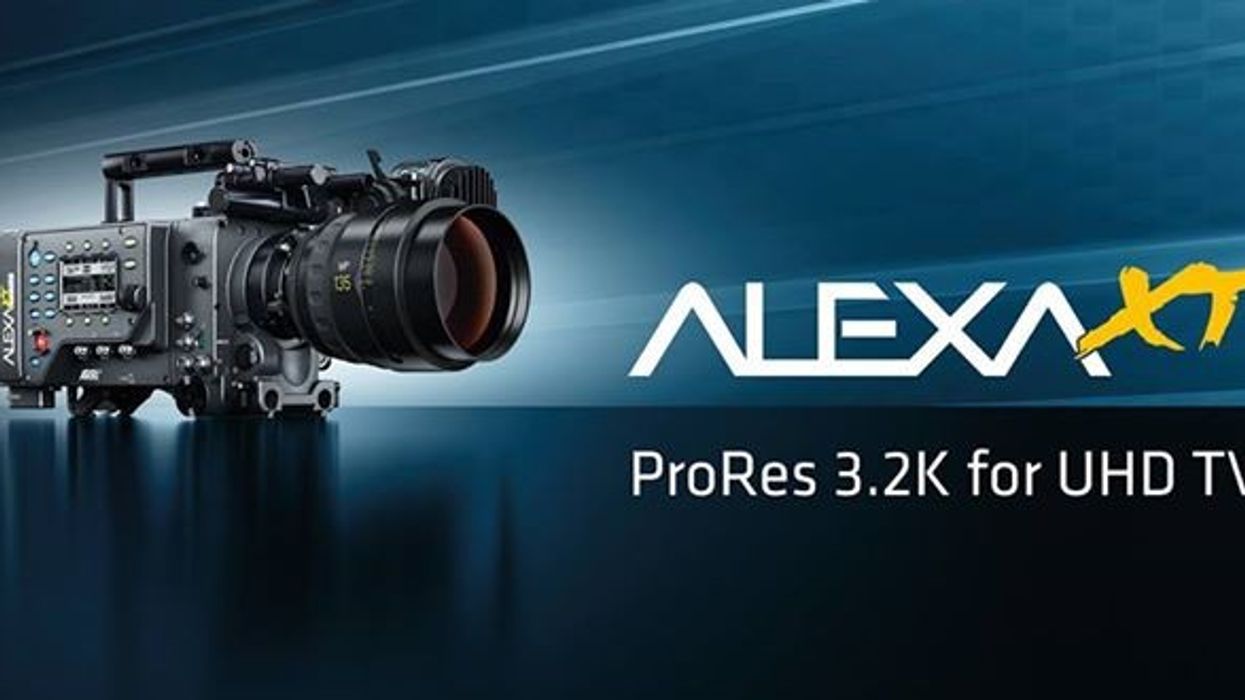ARRI ALEXA XT Getting Internal 3.2K ProRes Mode for Upscaling to 4K
Just a week after announcing that the ARRI AMIRA would get an internal 3840 x 2160 UHD ProRes mode, ARRI is now saying that its higher-end ALEXA XT cameras will be getting an internal 3.2K ProRes recording mode designed to be either downscaled to 2K/1080p, or upscaled to UHD, or even 4K, in post.

While these cameras are already capable of Open Gate mode, which uses the entire 4:3 3.4K sensor to record RAW, this new mode is 16:9 only, similar to the recording area of the AMIRA UHD mode. The difference is that the ALEXA won't be doing any upscaling inside the camera — they'll be leaving that for you to do in post. The 3.2K mode is likely somewhere around 3200 x 1800 (possibly higher), to give the upscaler cleaner numbers to work with (AMIRA would start in the same place, but upscales to 3840 x 2160 internally)
Here is ARRI on the new 3.2K ProRes recording mode:
The camera's stellar overall image quality in combination with ProRes 3.2K (due for release as a software update in early 2015) and ARRIRAW Open Gate (released earlier this year) allows for simple up-sampling to UHD or 4K in a quality at least as good as other contenders. And because of their unequalled exposure latitude and highlight handling, ALEXA images are already uniquely HDR-compatible. Put simply, ALEXA remains the safest available capture tool for asset longevity, no matter what future standards come to fruition.
And more here:
For TV productions looking for a UHD deliverable, ALEXA XT cameras and ALEXA Classic cameras with the XR Module upgrade offer the new and cost-efficient ProRes 3.2K recording option. At data rates far below uncompressed ARRIRAW, ProRes 3.2K provides the benefits of the well-established and efficient ProRes workflow. As an additional benefit, most lenses fully cover the 3.2K image circle that results from the 16:9 ProRes 3.2K image. A straightforward up-sample from ProRes 3.2K using standard post tools delivers UHD images of the highest quality for broadband and broadcast.
So ARRI is very much recommending upscaling as an option to get 4K/UHD footage from their cameras that record below that resolution. It's an interesting development, especially since there was a huge outcry about cameras like RED early on not shooting "real" 4K since each pixel does not contain all of the color information necessary for a complete picture, it has to be Debayered in post to get an image that makes sense, and resolved detail is lost along the way. Shooting 4K nets you lower than 4K resolution, somewhere around 3.2K, depending on the algorithm. So with that said, shooting at 3.2K is probably resolving somewhere around 2.5K, which is obviously nowhere near 4K. This is why single-sensor cameras wanting the highest fidelity have always started with recording more resolution for later (like ARRI's original 2.8K mode for 2K/1080p). The Sony F35 was a 5K sensor just for 1080p. The Sony F65 has an 8K by 2K sensor for a 4K output. RED's DRAGON is 6K. Oversampling is to get around the bayer pattern and start with more information:

Numbers don't tell the whole story, however. ALEXA footage has been upscaled to 4K plenty of times with good results, and even blown up to IMAX. A good upscaling algorithm should be able to get a lot out of the footage, though it's not really possible to get more actual detail than the resolution you're shooting. You can certainly give the appearance of more detail with more contrast or sharpening, but this solution from ARRI is more of a stopgap for users looking to get more detail and more pixels out of their master file until the company moves to 4K and higher sensors.
In the end, it's all about what it looks like. You've probably already seen ARRI footage upscaled to 4K and shown in a theater, and if you weren't complaining, the upscalers have done their job. ARRI's dynamic range and color are both excellent, and that goes a long way towards getting a pleasing image. If one camera is higher resolution, but another camera's image actually looks better, the number of pixels isn't telling the whole story.
3.2K ProRes will be a software update in early 2015, so we won't have too long to wait before we see how this will work in practice.
Source: ARRI












